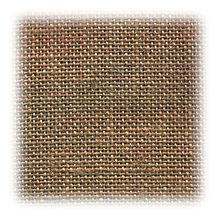Jute History

History
For centuries, jute has been an integral part of the culture of East Bengal and some parts of West Bengal, precisely in the southwest of Bangladesh. Since the seventeenth century the British started trading in jute. During the reign of the British Empire jute was also used in the military. British jute barons grew rich processing jute and selling manufactured products made from jute. Dundee Jute Barons and the British East India Company set up many jute mills in Bengal and by 1895 jute industries in Bengal overtook the Scottish jute trade. Many Scots emigrated to Bengal to set up jute factories. More than a billion jute sandbags were exported from Bengal to the trenches during World War I and also exported to the United States southern region to bag cotton. It was used in the fishing, construction, art and the arms industry. Initially, due to its texture, it could only be processed by hand until it was discovered in Dundee that by treating it with whale oil, it could be treated by machine.The industry boomed throughout the eighteenth and nineteenth centuries (“jute weaver” was a recognised trade occupation in the 1900 UK census), but this trade had largely ceased by about 1970 due to the emergence of synthetic fibers. In the 21st century, jute again rose to be an important crop for export around the world in contrast to synthetic fiber, mainly from Bangladesh.
Production
Jute stems being retted in water to separate the fibers
The jute fiber comes from the stem and ribbon (outer skin) of the jute plant. The fibers are first extracted by retting. The retting process consists of bundling jute stems together and immersing them in slow running water. There are two types of retting: stem and ribbon. After the retting process, stripping begins; women and children usually do this job. In the stripping process, non-fibrous matter is scraped off, then the workers dig in and grab the fibers from within the jute stem.
Jute is a rain-fed crop with little need for fertilizer or pesticides, in contrast to cotton‘s heavy requirements. Production is concentrated mostly in Bangladesh, as well as India‘s states of Assam, Bihar, and West Bengal.India is the world’s largest producer of jute, but imported approximately 162,000 tonnes of raw fiber and 175,000 tonnes of jute products in 2011. India, Pakistan, and China import significant quantities of jute fiber and products from Bangladesh, as do the United Kingdom, Japan, United States, France, Spain, Ivory Coast, Germany and Brazil.


 Free Delivery Anywhere in Canada
Free Delivery Anywhere in Canada